How to Build Better Teams in the Workplace
- 01 Why Is Teamwork Important in the Workplace?
- 02 Improving Teamwork and Collaboration in the Workplace
- 03 Teamwork Communication and Conversations
- 04 How to Lead a Team: The Manager’s Role in Teamwork
- 05 How to Lead a Team: The Executive’s Role in Teamwork
- 06 Matrixed Team Structure and Flexibility in Workplace
- 07 Seven Steps to Building a Great Team
- 08 Team-Building Activities for Work
- 09 Teamwork Success: Insights Into Two High-Performing Teams
01 Why Is Teamwork Important in the Workplace?
If retaining your best people, driving revenue and engaging your employees are important to your business model, teamwork should be important to you, as well.
Two main ideas must be understood to appreciate the importance of teams in the workplace.
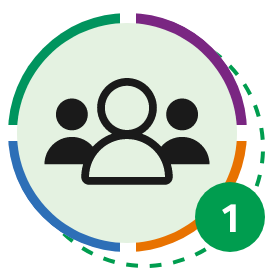 Strong Teams Start With the Individual Individuals who know their strengths work together to form better partnerships, and more thoughtful partnerships create stronger teams. Strong teams start with the individual.
Strong Teams Start With the Individual Individuals who know their strengths work together to form better partnerships, and more thoughtful partnerships create stronger teams. Strong teams start with the individual.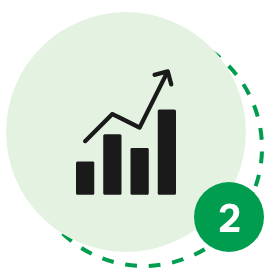 Teams Impact Business Outcomes The strengths and dynamics of your team directly affect business outcomes.
Teams Impact Business Outcomes The strengths and dynamics of your team directly affect business outcomes.Consider your business strictly in terms of its end goal. Are you trying to sell a product, increase donations or provide a service? For a moment, don't think about relationships. As you think about your goal, you should consider all business components that directly affect it. Now reintroduce the relationships -- your people matter, and the way your teams work together matters to the business goals of your organization.
Consider this fact about CliftonStrengths: When predicting both engagement and performance, a team's awareness of their strengths is more important than the specific composition of those strengths. In other words -- just knowing your strengths, as well as the strengths of your partners, leads to higher engagement and performance.
Higher levels of engagement affect business outcomes such as:
It's clear, teamwork and team building are important in the workplace.
When team members value each other's strengths, they more effectively relate to one another, avoid potential conflicts, boost group cohesion and create positive dialogue.
One of the most difficult tasks for an individual is easily explaining what they're good at. You can say you're "organized," but that could mean different things for different people.
Because strong teams begin at the individual level, the research-based CliftonStrengths assessment is a powerful tool that gives people a common language and vocabulary they can use to better describe, communicate with and understand each other. After acknowledging the importance of teamwork in the workplace and the power of knowing your strengths, take the next step by giving power to those strengths through CliftonStrengths.

When you have people in roles that fit their strengths and talents, their energy and passion can fuel their own great performance and inspire the same from their partners.
Understand, Appreciate and Use Your Individual Strengths
Build Powerful Partnerships
Purposefully Use Your Collective Talents and Strengths
Consider these items that great teams have in common:
- Team members can name and understand the individual talents of everyone on the team.
- Team members can see a clear connection between each other's strengths and behavior. They can see the link between strengths and success.
- Everyone on the team has partnerships that encourage their strengths development.
- Team members use their knowledge of each other's strengths to plan, strategize, analyze and direct their actions.
Do you want to be a great team, or take your already-great team to the next level?
Break down your possible "next steps" into the "best next step." Focus on one piece at a time. There is a zero percent chance that every team will go about improving teamwork in the same way, so recall that first, you should establish goals and then consider how teamwork helps achieve those business goals.
Decide what it is you're trying to achieve. Learn your strengths. Get to work.
Action Items:
- Check the pulse of your team by asking them about their perceptions of teamwork in your workplace.
- Decide whether teamwork is seen as important or unimportant to your organization and specify a simple goal that your team can achieve as a first step.
- Write down team goals you want to achieve or business outcomes you want to improve to narrow your focus. Then, set specific dates you want to achieve these goals.
02 Improving Teamwork and Collaboration in the Workplace
Let's get right to it. Here are some first steps, ideas and action items to start improving teamwork.
Initial Steps to Improve Teamwork

Setting goals is an integral part of improving teamwork. How can people do the things they do best when a) they don't know what they're supposed to be doing and b) they aren't given time to consider what brings them energy?
Begin by describing what each employee is supposed to accomplish, not how they are supposed to accomplish it. Explain expectations in terms of the outcomes the employee needs to achieve to reach team goals. How each employee goes about meeting these expectations will vary -- but if you've hired adults and you trust the adults you've hired, you need to give them the freedom to work the way they know best.
Begin by describing what each employee is supposed to accomplish, not how they are supposed to accomplish it.
Next, outline quality standards for each task or function on the team. When team members know what excellence looks like, they can deliver quality work. How does excellence look for the account lead on this project? What about the copywriter or the sales manager or the technology developer? Surely excellence looks different for each: define excellence to deliver quality.
Finally, know the strengths of your team members, and help them learn their strengths. Give each person time to self-reflect and consider what they do best, what gets in the way of their excellence, what they consistently deliver, and so on. We know CliftonStrengths is the best way to name, aim and claim those natural strengths, but for the sake of starting, begin with reflection -- and continue reading for more about CliftonStrengths and teamwork.
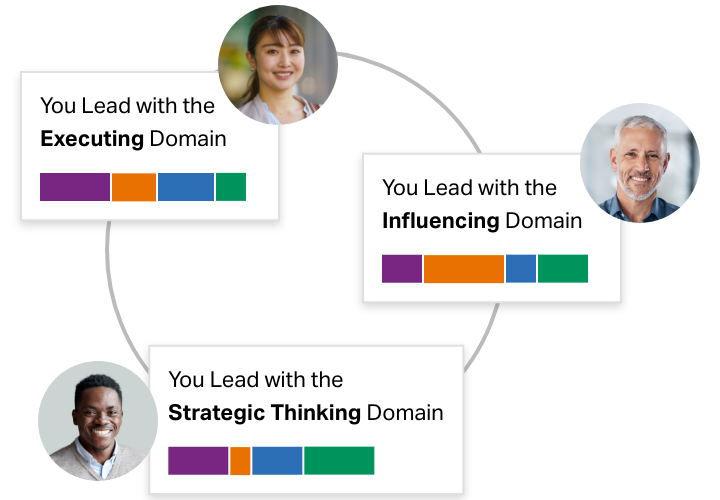
Now you have clear goals, everyone on the same page for standards of excellence, and the right people in the right roles performing the tasks.
Improved Teamwork Impacts Company Culture
Another area where you can build teamwork in an organization, and start today, is by recognizing quality work and achievements. When you reward team members for quality work, they will repeat what they have done, and the entire team gains a greater understanding of what excellence looks like.

Changing a culture doesn't happen without taking those initial steps. So when something like recognizing employees for their excellent work and contributions improves both teamwork and culture, you should take advantage of it.
By encouraging great teamwork and recognizing quality work, a team may experience greater emotional loyalty among individual members -- this is one of three characteristics that constitute a well-connected team, which, in turn, impacts the culture. These characteristics are:
Trust
confidence in one another's reliability and dependability
Teamwork
appreciation of one another's talents and strengths and recognition that these talents and strengths enable everyone to tackle challenges together
Emotional loyalty
a deep-seated loyalty to the team
These ideas of trust and emotional loyalty lay the foundation to start thinking about long-term teamwork solutions.
When thinking about ways to impact company culture, relate it back to the five C's to improve teamwork.

Common purpose- Identify team goals and objectives. Connection- What actions keep teams connected, who keeps teams connected. Communication- the effectiveness, accuracy, speed and strategy of communication. Collaboration- How your team builds and nurtures relationships. Celebration- Focus on your teams' recent successes and how you celebrated those successes.
Action Items:
-
Complete a goal audit; make sure you're describing what people should accomplish, not how to accomplish it.
-
Choose a team or organizational goal you'd like your team to achieve. Outline quality standards for each task or function that lead to the goal.
-
Based on your employees' roles and strengths, place them in positions that help the team achieve quality success in your goals.
-
Ask your team what gives them energy and what drains their energy. This will help individuals identify potential partnerships and improve team awareness.
03 Teamwork Communication and Conversations
Without effective ongoing conversations between managers and employees, the success of any goals and performance metrics is left to chance. In most companies, objectives change as business needs shift throughout the year, and change often creates anxiety and confusion. But with ongoing coaching, employees are more likely to have clear expectations that align with the overall business, so they can better handle change with confidence and clarity.
The five conversations that drive performance, according to Gallup's bestselling book It's the Manager, are a practical framework for how and when to establish expectations, continually coach and create accountability.
1. Role and Relationship

1 Role and Relationship
Primary objective: These conversations are a way for managers and employees to collaboratively set goals that stretch employees to achieve their best performance. Managers can get to know each individual and their strengths and establish expectations that align with the person's strengths and the organization's overall objectives.
Role and Relationship conversations allow managers and team members to collaboratively define what success looks like in the individual's role and connect that success to the employee's goals.
2. Quick Connect

2 Quick Connect
Primary objective: These conversations are informal, impromptu and help managers build relationships with their employees. Managers can give employees timely recognition for a success, ask how it's going, or just touch base and listen. These conversations are those unexpected hallway, coffee or lunch chats.
Quick Connect conversations are not working meetings; they're an opportunity for employees to discuss what they're excited about, ask questions or share creative ideas.
3. Check-In

3 Check-In
Primary objective: More planned than Quick Connects, these conversations happen less frequently. During Check-In conversations, managers and employees review successes and barriers and align and reset priorities. These conversations last from 30-60 minutes and are a "what's on your plate" working meeting -- a good time to align on priorities and offer your employees support.
4. Developmental Coaching

4 Developmental Coaching
Primary objective: Developmental Coaching conversations feel very "in the moment" -- managers can offer immediate feedback or proactive coaching. Whether it's for an upcoming project, meeting or something else, these conversations should feel as real time as possible. They allow the manager to give the employee direction, support and advice when they are exploring career, aspirational or developmental opportunities.
Managers can take what they learn from these conversations and connect Check-Ins to the employee's individual development and goals.
5. Progress Reviews

5 Progress Reviews
Primary objective: These conversations should happen every six months or at the end of the year and should cover an employee's progress and development goals. They are more formal and should cover the details of metrics and measurable performance.
Use Progress Review conversations as a powerful coaching tool by celebrating success, preparing for future achievements, and realigning on development and growth opportunities.
Team development begins at the individual level, and managers must do their part to facilitate growth, encourage openness and communicate shared goals across the team. Managers should use the collective information from these conversations to help determine the best path to development for each of their employees and for their team as a whole.
Gallup research found that remote-ready employees in collaborative jobs who work on-site two to three days per week are more engaged and have higher wellbeing.
80% of employees who say they have received meaningful feedback in the past week are fully engaged
But there is a factor that matters substantially more than the number of days in the office: 80% of employees who say they have received meaningful feedback in the past week are fully engaged -- regardless of how many days they worked in the office.
In fact, the boost from meaningful feedback gives four times the lift in engagement than having the “right number” of days in the office. The problem is, Gallup found in a recent study that among nearly 15,000 employees, only 16% said the last conversation with their manager was extremely meaningful.
What counts as meaningful?
Gallup researchers studied the most common characteristics of extremely meaningful and less meaningful conversations. These are the top five characteristics of meaningful conversations, in order of importance:

Recognition or appreciation for recent work. Gallup and Workhuman found that only 10% of employees are asked how they like to be recognized and appreciated. And only 23% of employees strongly agree that they get the right amount of recognition for the work they do. Those who do are four times more likely to be engaged.
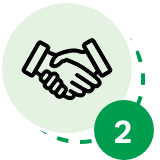
Collaboration and relationships. In the hybrid workplace, collaboration and relationships are at risk. Gallup found that the correlations between coworker relationships and intention to stay as well as likelihood to recommend the company were stronger in 2022 than before the pandemic. Managers play a key role in connecting the right team partners.

Current goals and priorities at work. Clarity of work expectations has been slipping, especially for younger workers. More remote work means weekly check-ins are essential as customer and business needs change.

The length of the conversation. Between 15 and 30 minutes is enough time for a meaningful conversation, but only if it happens frequently. In fact, 15- to 30-minute conversations have a greater impact than 30- to 60-minute conversations if they occur regularly. But if managers don’t give employees feedback every week, they will need longer conversations to catch up.

Employee strengths or the things they do well. Managers can have much more meaningful discussions about how each person gets their work done if those conversations are based on what they do best. The goal of Gallup’s CliftonStrengths assessment is to create more effective conversations that maximize the potential of every team member.
The takeaway is that feedback is meaningful to employees when their manager focuses on recognition, collaboration, goals and priorities, and strengths. And if these conversations happen every week, they can be brief. Naturally, problems and challenges will arise -- and managers and employees should discuss them -- but to improve engagement, managers need to have conversations that inspire each individual.
The one conversation topic employees perceive as less meaningful is discussing their weaknesses or what they don’t do well. This might be because, in many conversations, employee weaknesses are all that managers discuss. Without the high-priority focus areas above, it’s extremely hard for managers to build trust and inspiration.
Action Items:
-
For managers: Set time on your calendar for the next couple months to check in with each of your employees.
-
For employees: Reach out to your manager and request a time to check in. Have a few talking points you'd like to discuss and ask about making check-ins a regular occurrence.
-
Team bonding doesn't have to be formal. Stop avoiding your coworkers in the copy room, hallways or lunch line. Chat about work, chat about life, just start forming those meaningful relationships.

Enroll your frontline supervisors in Conversations That Matter, Gallup’s manager training with practical, research-backed techniques that promote focused, accountable and high-performing teams.
04 How to Lead a Team: The Manager’s Role in Teamwork
Managers are important. Seventy percent of the variance in team engagement is determined solely by the manager. That's a big stat -- all things related to teamwork fall back on the manager -- so let's rephrase, managers are the most important.
70% of the variance in team engagement is determined solely by the manager.
Great managers provide a clear definition of quality work and link this description to performance standards. When team members know what excellence looks like, they can better deliver quality work.
Managers should not assume that employees always know how to accomplish their goals. Even if a manager and employee initially set goals together, circumstances and priorities still change.

It's vital that the manager keeps the team moving in the same direction while keeping a pulse on the context in which their employees are living and working. Imagine if you were in the hospital for a month, and the nurse only came in once to check your vitals. Is it nice that they came in to see how you were doing? Well, yeah, but they're not really doing their job. Wouldn't it have been nicer if they came in daily, maybe even multiple times a day? Of course.
The same idea applies to managers. Between regular meetings, planned check-ins and spontaneous touch bases, managers will see the full spectrum of work that their team is accomplishing. In terms of teamwork, the manager is the one who is setting the expectations, highlighting opportunities to improve team collaboration, and oftentimes distributing the workload. This can only happen successfully when the manager chooses to remain involved in and engaged with their team.
Sound like an insurmountable expectation? This is where knowing your team's strengths saves the day. Each person may define teamwork/approach teamwork differently. Gathering individual employee's ideas about teamwork (what they expect and what they need) will give you a solid foundation that carries the weight of all your responsibilities as a manager. Talk about your approach and use strengths-based conversations to help set and manage expectations related to goals and performance. This is the job of the manager.
Simply knowing one's strengths is not enough to make a difference in performance. Managers need to have a conversation with team members so that they recognize not only who they are but also what they are capable of becoming.
To help team members understand and use their strengths, managers must ask themselves two questions: Am I an expert on my team members' strengths? Do all of my team members know and appreciate their unique strengths and contributions?
Think about the dynamics or the makeup of your team. If you were asked to describe how your group works as a team or define their processes, could you do it?
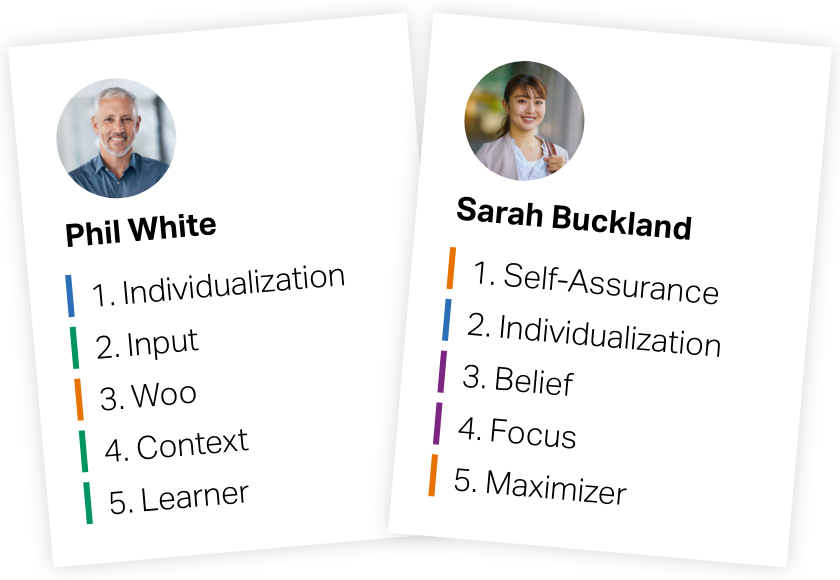
Knowing the individual strengths of each team member is important, but the collective strengths of your team are equally important. It's important to visually display the makeup of your team. CliftonStrengths grids show the order of a team's strengths and provide invaluable insights into the way that team operates. There are four domains that each strength fits within. These are the Strategic Thinking domain, the Executing domain, the Relationship Building domain and the Influencing domain. If your team is heavily driven by relationships, you ought to manage them in a much different way than if they were heavy strategic thinkers.
CliftonStrengths Team Grid

As a manager, it's your responsibility to know your team, inside and out.
Indefinitely, it's the manager's job to provide work that fits each employee's needs rather than giving them work that drains them. Although it's true that, eventually, each employee will have to do work they don't enjoy (i.e., filling out expense reports), knowing what gives people energy and giving them the opportunity to do that thing can make up for it.
One final aspect of the manager's role in teamwork is to serve as the cultural conduit between executives -- who define and support the company's mission, purpose and goals -- and their employees, the ones doing the operational work that should connect to the mission, purpose and goals.
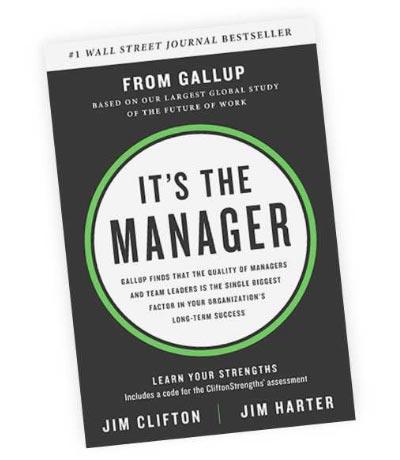
It's the Manager
This important job requires frequent communication and someone willing to help employees connect their individual roles to the greater mission and purpose of the organization.
Action Items:
-
Set aside time to outline standards for quality work. You can't communicate expectations to your employees without understanding them yourself.
-
Meet with your team to focus on engagement only. Intersperse team-building activities with questions to get to know your team better.
-
With your team's strengths in mind, consider how and when they do their best and worst work. Invite your team into this discussion if you're comfortable -- but learn how the team is wired and leverage those strengths.
05 How to Lead a Team: The Executive's Role inTeamwork
"Bet your leadership job on this: When team inspiration grows, client buildouts, revenue and quality earnings grow."
An executive's role in teamwork is similar in some ways to the manager's role. However, they should be more focused on what's happening behind the scenes.
Executives can inspire teamwork through defining the organization's mission, purpose and values.

From an executive's standpoint, their role in teamwork has seemingly fewer immediate connections to the concept. This is because they're driving the larger mission and goals while communicating to managers and employees how their specific jobs connect to those greater goals.
It's important for executive leaders to set priorities, have discipline and follow through. They should be investing time, resources and energy into their managers because they understand the two non-negotiable traits for leaders.

Bring multiple teams together:
Executives need a well-defined and well-articulated mission and purpose that everyone can easily relate back to the work they do every day -- their contribution.
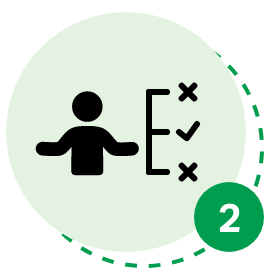
Understand how you make decisions, then make great ones:
Leaders must have an honest understanding of their decision-making limits (strengths and weaknesses), apply critical thinking, and use analytics-driven evidence (what do the numbers say?).
In addition to inspiring their people, executives must focus on those two traits.
Consider a culture that might be the opposite of one that promotes teamwork -- one that promotes entitlement. While cultivating a culture of entitlement may not be intentional, it can happen when executives make poor leadership decisions and focus on the wrong aspects of culture. For example, if an executive makes providing free, daily lunches a higher priority than the mission and purpose of an organization, entitlement will begin to define the culture. The executive may find teams complaining that the chef is no longer up to par or maybe that the food isn't as good as it once was. Perhaps the quality declined … or maybe employees are searching for something greater than a perk.
The bottom line is that if executives don't create the culture, the culture will create itself. This leaves you and your organization susceptible to losing your best employees.
According to the bestselling book It's the Manager, only 27% of employees strongly believe in their company's values. And Gallup's research reveals that less than half of U.S. employees (41%) strongly agree that they know what their organization stands for and what makes it different from its competitors.
Philosophically, if executives have a perspective that positions the mission, purpose and values at the core and communicates this to managers, business outcomes and culture remain the focus.
According to the bestselling book It's the Manager:
27% of employees strongly believe in their company's values
41% strongly agree that they know what their organization stands for and what makes it different from its competitors
Stop Hoarding Talent and Get Practical About Teamwork
Ever heard of talent hoarding? One sure way to improve teamwork in the workplace as an executive is to encourage talent sharing and be aware of talent hoarding.
Talent hoarding is when your star talents are being left without developmental opportunities because they are consistently resourced to the same people or projects. The personal priorities of some managers keep the best talent working for them -- and when your "best employees believe that the only way up is out, you have a serious retention issue on your hands."
Talent sharing, or proactively moving stars to new roles or having conversations about growth and development, is a great way for executives to help improve teamwork in the workplace.
The bottom line is that if executives don't create the culture, the culture will create itself. This leaves you and your organization susceptible to losing your best employees.
In the end, the executive is the one who needs to get practical about teamwork. Know when it's going to fuel a team or when there is an intentional design to exclude teamwork. For example, collaboration and open communication may be encouraged -- but competitive, more individualized work comes with the job (i.e., sales, recruiters, etc.). Executives should know where friction or healthy conflict is intentional.
Teamwork is not always defined by "getting along," but rather, it should be about having respect for individual ideas and personalities. In other words, teamwork has a couple faces, but it's up to the executive to handle the tension between great products and outcomes and great relationships.
Action Items:
-
Take a look at your mission, purpose and values -- do they exist so that you can say you have them, or are they driving business decisions?
-
What's one business outcome you want to change (retention, engagement, absenteeism, profit)? Think of all the ways (and get as creative as you can) that improving teamwork may affect that outcome.
-
Read Gallup's CHRO insights to better understand what is on the minds of the top CHROs from around the world.
06 Matrixed Team Structure and Flexibility in Workplace
An important step to understanding your team and improving teamwork is to define your team -- as teams today aren't as straightforward as they used to be.
Gallup finds that 84% of U.S. employees are "matrixed" to some extent -- that is, they might work on multiple teams every day, reporting to the same or different managers.
Matrixed team structures can help companies be more nimble, especially in an increasingly agile workforce era. To move projects across team lines quickly without sacrificing quality for speed is a challenge. This is where teamwork across multiple teams, as well as increased communication and collaboration become even more important.
Just as a matrixed structure doesn't automatically make companies more focused, adaptable or agile, placing individuals on highly matrixed teams does not make them better at teamwork or great at collaborating with their partners. Here are two items to help increase productivity and successful collaboration across teams:
Get clear on expectations. To build clarity, leaders need to actively create a culture of dialogue between managers and employees. Maintaining open lines of communication on a day-to-day basis will help bring clarity to foggy expectations (i.e., remember the importance of ongoing conversations).
Emphasize your job's (or your employees' jobs') connection to the greater purpose. Consider what we said earlier on: Teamwork is nonexistent apart from the "something" that your team is working toward together. If a team member is unable to see how their presence on a team or role is connected to the greater purpose, they will be less engaged and committed.
Flextime reshapes team dynamics and traditional teamwork skills, extending beyond when and where people work to encompass work type, structure, culture, environment, and roles. Managers promoting flextime must prioritize autonomy with accountability to enhance teamwork. Trust, crucial for teamwork, begins with leaders modeling trust and supporting flexible work options. Building trust involves individualization, keeping promises and maintaining regular communication. For remote workers, face time during onboarding and annual in-person meetings help foster trust and connection.

Managers need to grasp the importance of their relationship with remote employees to tailor support for performance and foster collaboration between traditional and remote teams. Isolation in remote work can hinder performance, emphasizing the need for remote employees to feel part of a team. As workplaces evolve, conflicts are inevitable in the quest for effective teamwork.
With these changing components of the workplace and the constant attempts at figuring out how to build an effective team, conflict is sure to arise.
Navigating challenging team dynamics, whatever the cause, can be a wildly uncomfortable topic for some. But conflict and friction following a change in traditional team structure is nothing more than a classic cause-and-effect relationship. When navigating tough dynamics, remember these two things:
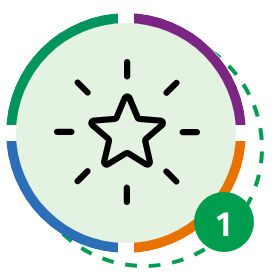
Focus on Strengths
Start strengths-based conversations at an individual level as individual ownership is vital to strongly collaborative team cultures.
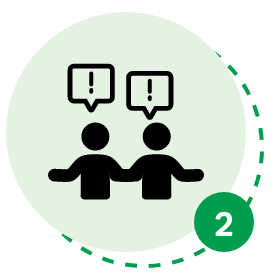
Embrace Conflict
Embrace conflict, don't avoid it. High-performing teams recognize that conflict is a natural consequence of collaboration. Engage in authentic dialogue with the expectation that you'll reach a conclusion.
Action Items:
-
Think about the teams on which you're currently serving. What is the greater purpose of the team? What goals are you trying to achieve? And how do you connect to that?
-
Reach out to your best partners and thank them for their talents, gifts and partnership.
-
When having a meeting with a remote worker, use video instead of only audio.
07 Seven Steps to Building a Great Team
Build a better team the same way you'd build anything else, piece by piece.
Although they don't have to be in this order, consider these steps to building a better team as an invitation to something greater.
- Give people the opportunity to do what they do best.
- The most effective teams trust one another to deliver quality work, so they share a common definition of quality and talk about quality as a fundamental value of the team.
- Create an opportunity for two employees to work on a project together so that they can each do what they do best and possibly develop a closer relationship. As the pairs find better ways to work together, their insights about partnerships lead to enhanced trust and relationships across the whole team over time.
- Set goals for your team that align with the overall mission, purpose and vision of the organization.
- Lead open discussions about recent problems your team has faced. Talk about what went wrong but focus more on best practices for the future.
- Identify and discuss quality with your team. Learn what quality means to them and the things they do to foster high-quality standards.
- Share best practices. From research or experience, maybe both, share some of the best practices for teamwork in the workplace and encourage others to share theirs.
- Pick two of these steps and set a date for deployment.
- Find a partner who can help you get these steps started -- it's important to create momentum at the start.
08 Team-Building Activities for Work
A team's success ultimately depends on its ability to perform and achieve its goals. So make sure your team is ready to do just that!
Engage employees and lead stronger, more productive teams with our CliftonStrengths Team Activities Guide. This collection of 34 valuable CliftonStrengths activities includes worksheets, informational resources and 79 supporting facilitation slides proven to help individuals and teams succeed. Within the action items in this section, you will find two team exercises that we've pulled from the guide to feature.
- The Strengths Sharing sample activity helps individuals share unique aspects of their strengths with the team, creating a greater awareness of everyone's strengths.
- The Your Contributions to the Team sample activity helps team members better understand how their unique talents and contributions complement those of others on their team.
- Get the entire CliftonStrengths Team Activities Guide here.
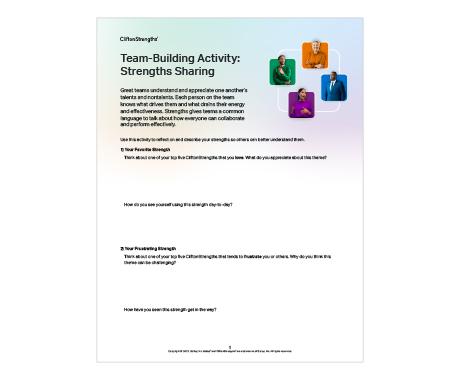
Strengths Sharing Activity
When deciding your next steps, remember that team exercises and activities should have a greater purpose. Need help deciding whether one is meaningful or inconsequential? Relate it back to these five broader tactics that improve teamwork.
If your teamwork activities don't fit into one of these categories somehow, find team-building exercises that do! Here is one to get you started.
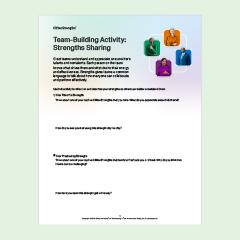
Strengths Sharing Team-Building Activity
Action Items
- Download the Your Contributions to the Team sample activity to learn how to create an environment centered on teamwork through your individual contributions to the team.
- Download the Strengths Sharing sample activity to create a greater awareness of all team members' strengths.
09 Teamwork Success: Insights Into Two High-Performing Teams
A strengths-based culture isn't a "soft idea" or simply a "nice dream." Instead, it represents a cultural shift in the workplace where each employee is encouraged to use and invest in their strengths, which directly affects business outcomes -- and there's nothing soft about that.
See how two companies, Southwest Airlines and Stryker, have implemented a strengths-based culture with CliftonStrengths -- and hear from real employees about just how much CliftonStrengths has changed the game both professionally and personally for them.
These high-performing teams represent best practice commitment to the development of teams and organizational culture.
Final Checklist for Improving Teamwork
- Ask your team what gives them energy and what drains their energy. Ask yourself the same questions. This will help individuals identify potential partnerships and improve individual and team awareness.
- Have a conversation with your team about the future of the team and identify common themes you hear when listening to team members' responses.
- Think of one business outcome you want to change (retention, engagement, absenteeism, profit). Now, think of all the ways (and get as creative as you can) that improving teamwork may affect that outcome.
- For managers: Set time on your calendar, it doesn't have to be more than 30 minutes, for the next couple of months to check in with each of your employees. For employees: Reach out to your manager and request time to check in. Have a few talking points you'd like to discuss and ask about making 30-minute check-ins a regular occurrence.
- Think about the teams on which you're currently serving. What is the greater purpose of the team? What goals are you trying to achieve? And how do you connect to those goals?
- Lead open discussions about recent problems your team has faced. Talk about what went wrong, but focus more on best practices for the future.
- Identify and discuss quality with your team. Learn what quality means to them and the things they do to foster high-quality standards.
Start Improving Your Team Today
Congratulations! Now that you know everything that's needed to improve teamwork at your organization, check out more resources and information about CliftonStrengths.
We're excited for you and your team to start seeing improved outcomes immediately!



